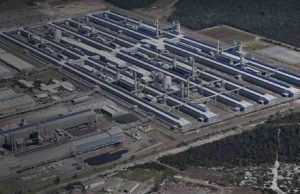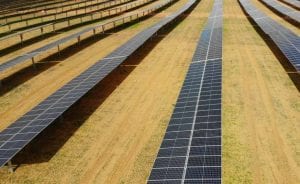
Two of the world’s biggest computing and data tech giants, Google and Apple, have announced within days of each other that they are now meeting all of their electricity demand with renewable energy, in one way or another.
First came Google, with a blog post on April 4 declaring that the company’s total purchase of energy from renewable sources of mainly wind and solar exceeded the amount of electricity it used across its global operations in 2017, including its offices and those energy guzzling data centres.
As the blog is careful to note, Google doesn’t claim to be 100 per cent renewable powered – “because it’s not yet possible to ‘power’ a company of our scale by 100 per cent renewable energy.”
Powering existing data centres directly with 100 per cent renewables is particularly difficult, considering that most of them are grid connected.
Rather, explains Google’s president of technical infrastructure, Urs Hölzle, it means that “for every kilowatt-hour of electricity we consumed, we purchased a kilowatt-hour of renewable energy from a wind or solar farm that was built specifically for Google.
“This makes us the first public Cloud, and company of our size, to have achieved this feat,” he said.
It also makes Google is the largest corporate purchaser of renewable energy in the world, the company claims.
“Today, we have contracts to purchase 3GW of output from renewable energy projects; no corporate purchaser buys more renewable energy than we do,” Hölzle added.
“To date, our renewable energy contracts have led to over $3 billion in new capital investment around the world.”
And it will have to keep up the good work. According to Google’s head of energy strategy, Neha Palmer, the company’s energy demand growth has been in the double digits for the past six years, and will likely continue on that trajectory.
“Investing in renewables makes sense for our business,” she told the Financial Times. “These are long-term transactions with fixed prices . . . the prices in some markets are competitive or even lower than conventional power.”
But the next major renewables goal for Google, says Hölzle, is to get it to a point where renewables and other carbon-free energy sources “actually power our operations every hour of every day.”
“It will take a combination of technology, policy and new deal structures to get there, but we’re excited for the challenge. We can’t wait to get back to work.”

Then comes Apple, which in its own blog, published five days later on April 9, announced that all of its global facilities – retail stores, offices and data centres across 43 countries – were now powered with 100 percent clean energy.
“After years of hard work we’re proud to have reached this significant milestone,” said Tim Cook, Apple’s CEO.
“We’re going to keep pushing the boundaries of what is possible with the materials in our products, the way we recycle them, our facilities and our work with suppliers to establish new creative and forward-looking sources of renewable energy because we know the future depends on it.”
According to the blog, Apple currently has 25 renewables projects in operation around the world, totalling 626MW – a massive 286MW of which was added in 2017, in solar PV alone.
The company also has 15 more projects in construction which, once built, will add up to more than 1.4GW of renewable energy generation across 11 countries.
This pipeline includes plans to build a new data centre in Waukee, Iowa, that will run entirely on renewables from day one.
And a partnership with Japanese solar company Daini Denryoku to install more than 300 rooftop solar systems to generate a combined 18,000 megawatt-hours a year — enough to power more than 3,000 Japanese homes.







